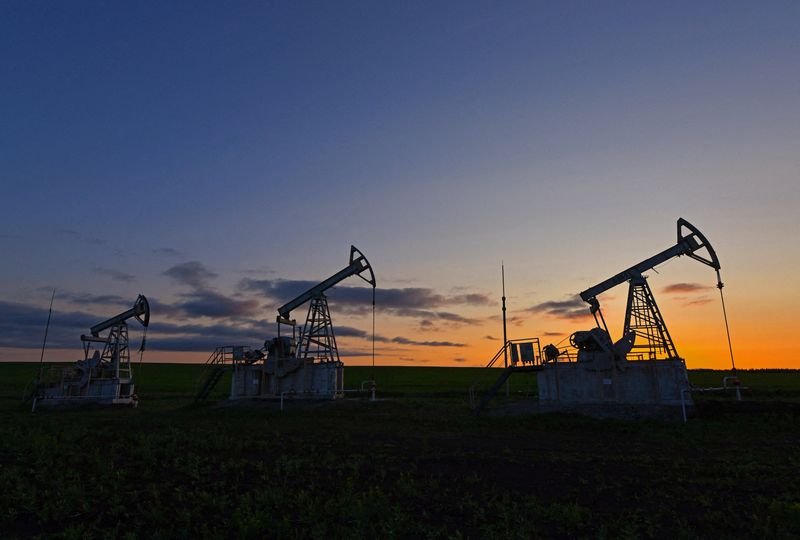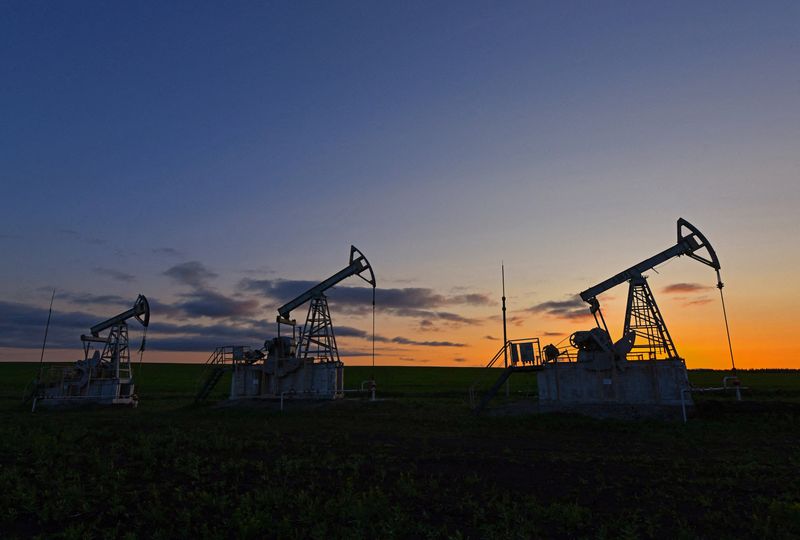
By Georgina McCartney
HOUSTON (Reuters) -Oil prices steadied on Friday but were set for a weekly fall after U.S. President Donald Trump announced sweeping plans to boost U.S. production, while demanding that OPEC moves to lower crude prices.
Brent crude futures gained 5 cents, or 0.06%, to $78.34 a barrel by 10:40 a.m. EST (1540 GMT) while U.S. West Texas Intermediate crude (WTI) fell 14 cents, or 0.19%, to$74.48.
Over the week Brent has lost 3% while WTI was down 4.4.
The threat of harsh U.S. sanctions on key oil producers, Russia and Iran could undermine the Trump administration’s goal of lowering energy costs, said StoneX analyst, Alex Hodes said in a note on Friday.
“Trump knows this and has leaned on OPEC to cover the void that these will create,” Hodes said.
Trump told the World Economic Forum on Thursday that he would demand that the Organization of the Petroleum Exporting Countries and its de facto leader, Saudi Arabia, bring down the crude prices.
OPEC+ has yet to react, with delegates from the group pointing to a plan already in place to start raising oil output from April.
“I don’t really expect OPEC will change policy unless there is a change in fundamentals,” said UBS commodities analyst Giovanni Staunovo. “Markets will be relatively muted until we get more clarity on sanctions policy and tariffs.”
Trump also said he would ask Riyadh to increase a U.S. investment package to $1 trillion, up from $600 billion reported earlier by the Saudi state news agency.
The new U.S. president also declared a national energy emergency on Monday, rolling back environmental restrictions on energy infrastructure as part of plans to maximise domestic oil and gas production.
These roll backs could support oil demand but have the potential to exacerbate oversupply, said Nikos Tzabouras, senior market specialist at trading platform Tradu.
The Trump presidency has so far played out largely as predicted on the supply side, including cutting red tape to promote domestic supply growth, according to StoneX’s Hodes. However “the lower hanging fruit for growth has already been picked.”
On Wednesday, Trump vowed to hit the European Union with tariffs and impose 25% tariffs on Canada and Mexico. He also said his administration was considering a 10% punitive duty on China.
As attention shifts to a possible February timeline for new tariffs, caution is likely to persist in the market, given potential negative implications for global growth and oil demand prospects, said IG market strategist Yeap Jun Rong.
Traders expect oil prices to range between $76.50 and $78 a barrel, Yeap added.

While bullish catalysts such as a significant drawdown in U.S. crude stocks are providing temporary positive swings, an over-supplied global market and projections of ailing Chinese demand continue to weigh on crude futures, said Priyanka Sachdeva at brokerage Phillip Nova.
U.S. crude inventories last week hit their lowest since March 2022, the U.S. Energy Information Administration said. [EIA/S]
This post is originally published on INVESTING.




